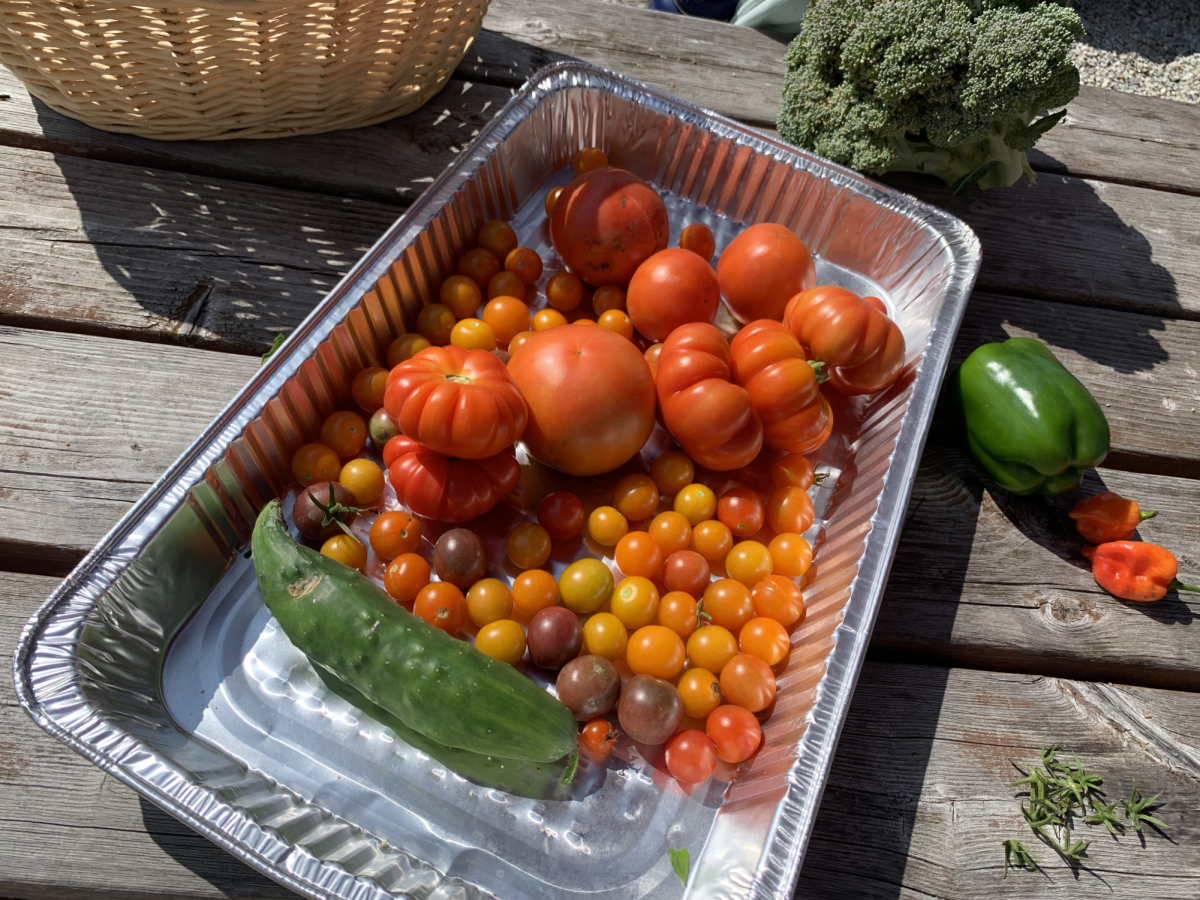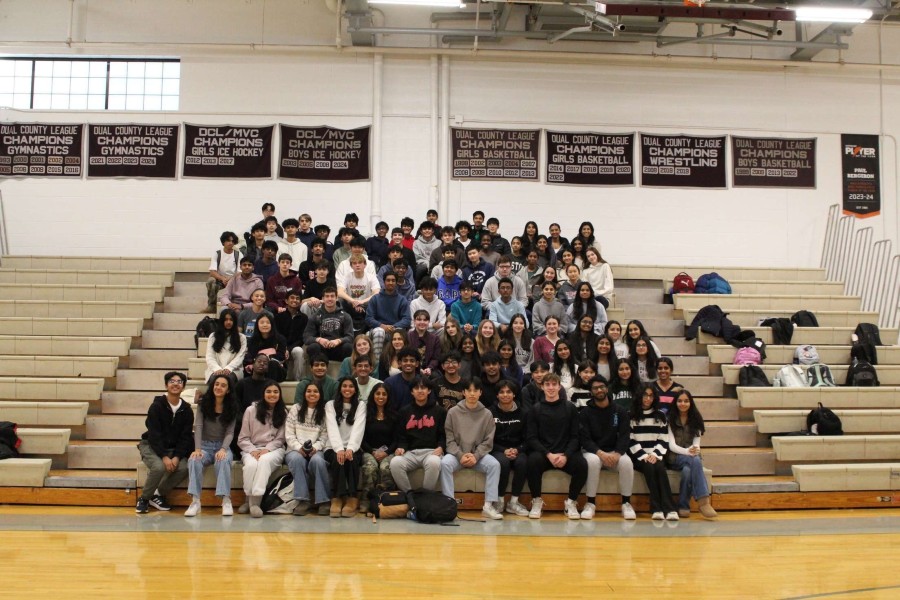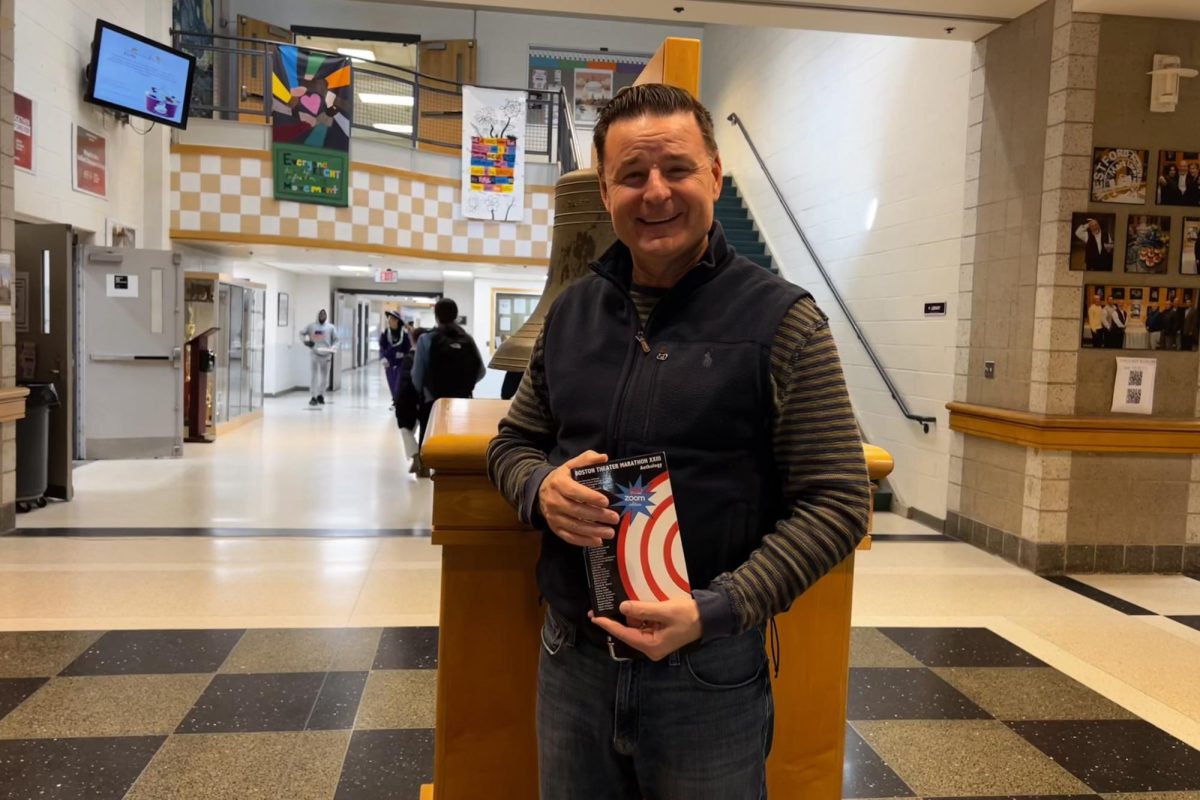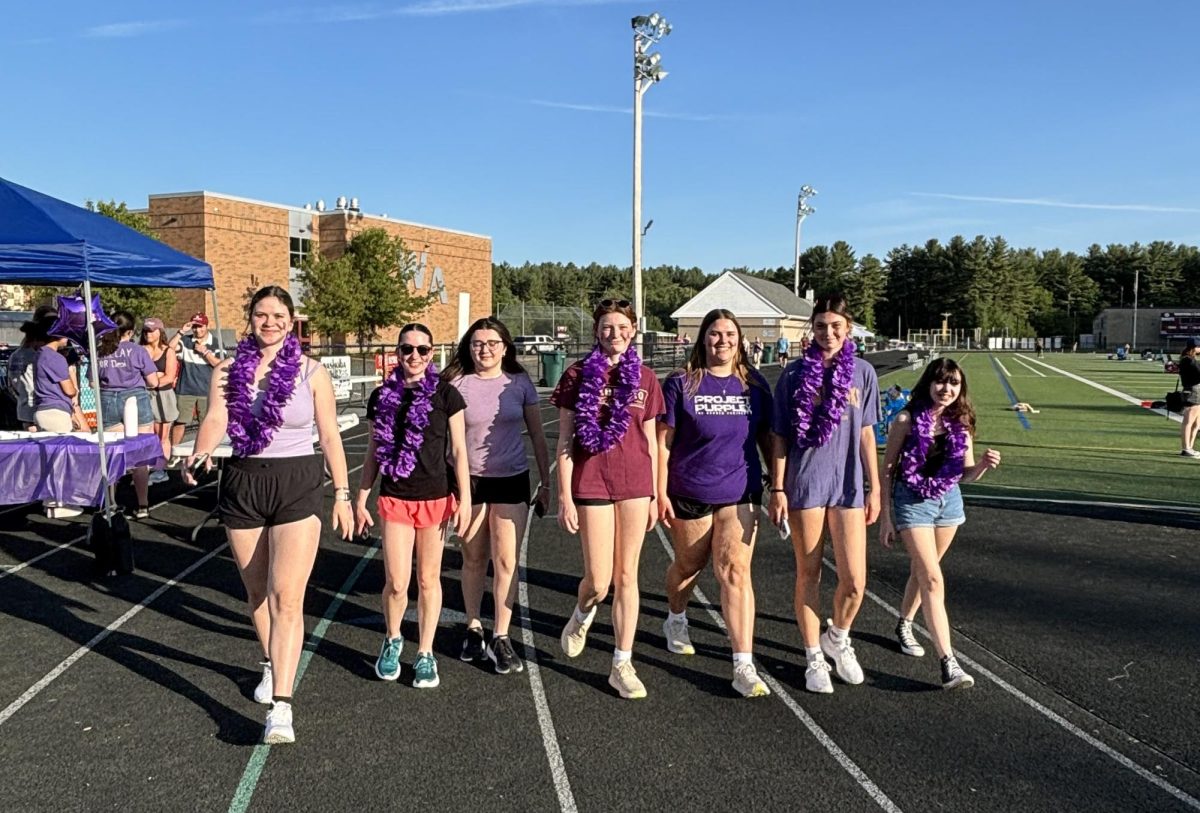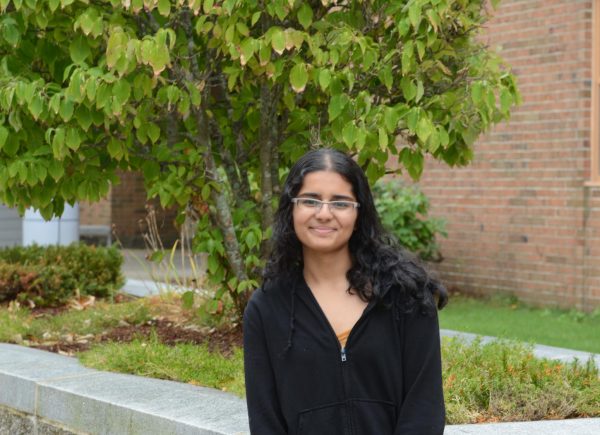Most students know when buying lunch that they are required to take a side of vegetables. What many may not realize, however, is that some of these options are freshly picked just a few feet outside of the cafeteria. In the span of just a few months, what used to be a barren area next to the picnic tables has been transformed into a blooming garden complete with vibrant flowers and flourishing produce. The gardener? Principal Dan Twomey.
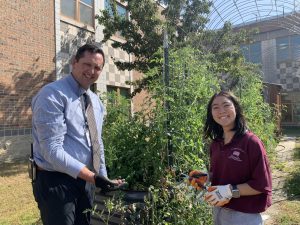
Last June, with the help of a few student volunteers and custodial staff, Twomey made it his mission to revitalize the school garden, reflecting on his desire to give classes the opportunity to liven up the learning process and contribute towards a more sustainable WA.
WA’s gardening initiative was originally started by former principal Jim Antonelli years ago in hopes of putting compost scraps generated by the school to use. After receiving funding from the Westford Academy Board of Trustees, the school began installing garden infrastructure, such as vegetable towers and an irrigation system.
Following Antonelli’s leave, however, Twomey found that maintaining the garden would be a challenge, especially since all the teachers who were initially involved would be unable to continue their commitment.
“It was late June and a late planting season, too, but I decided I was still going to do it because I felt it was something that was still worthwhile to continue [and] a wonderful thing to have,” Twomey said. “It shows students that [gardening] is actually pretty easy to do and where our food comes from.”
With this goal in mind, Twomey took on the garden as a learning experience for himself, shopping for already planted seeds and visiting local greenhouses right as school ended. He also notes the decision not to use pesticides, and instead go organic, relying on the school’s composting scraps.
Despite the occasional pest, by the end of the summer, the garden was successfully generating a variety of fresh produce including cucumbers, tomatoes, cabbage, peppers, broccoli, and even watermelon. From roasted veggie wraps to specialty cucumber and tomato salads, the cafeteria has also incorporated the rest of these greens into food options over the past few months.
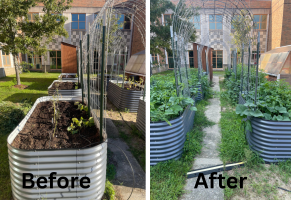
“We don’t grow enough to put it on the [main] line, but usually I try to make something special and be creative with it for the [salad] line or as an extra [vegetable],” cafeteria manager Dantia D’Ambrosia said.
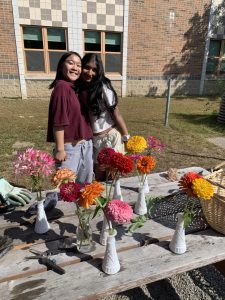
Now, Twomey can often be found at least once a week tending to the garden—pruning, picking, or planting—with any interested students. In addition to the nutritional benefits, Twomey’s primary vision is to see the garden used in classrooms and clubs as a real-life application of the environmental principles they learn in class.
“There’s been a lot of interest from students and small moments of learning, just having [the garden] there,” Twomey said. “[…] What I have also found is that students are really interested in anything related to any type of green initiatives and sustainability. And, I hear you. It makes me interested and it makes me want to do this.”
In fact, earlier this month, Twomey held a meeting with students from the Environmental Club and Student Senate to brainstorm climate activism ideas. Areas of discussion included implementing solar panels on the roof or, on a smaller scale, a week dedicated to sustainability principles, such as composting lunch or using less paper each day.
“Everyone had said it felt so great to have their ideas heard,” Environmental Club president Juliette Travassos said. “It was so great to tell somebody what the problems in the school are, what we could do, and have him listen. I think students are going to be such a big part of the sustainability conversation in the school now.”

